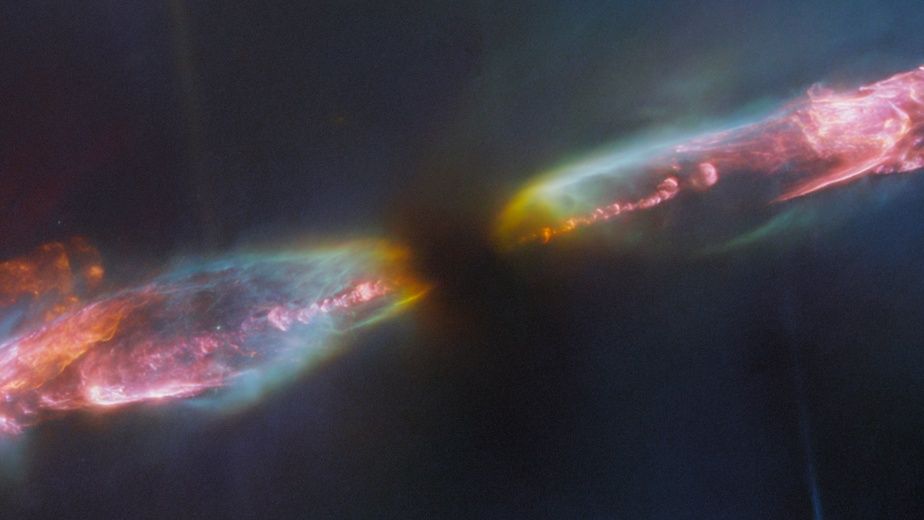It appears that some of the most powerful phenomena in the cosmos arise from its youngest inhabitants.
The latest cosmic eye candy, delivered by NASA’s mighty James Webb Space Telescope (JWST) features jets of star matter blasting from the poles of a very young star and zipping through space at supersonic speeds.
The jets, which are together called Herbig-Haro 211 (HH 211), live in an energetic pocket of space located about 1,000 light-years away from Earth in the constellation Perseus. In this region, a protostar is actively sucking in surrounding gas and dust to grow larger, but is meanwhile shedding material into space in what astronomers call a bipolar outflow. And as those jets of material zoom through space, the JWST’s sharp infrared eye managed to capture their interactions with interstellar matter as bright, colorful swirls.
The protostar (which is not seen in Webb’s image) is suspected to be a binary star and likely represents what our sun used to be like when it was just a few tens of thousands years old with just 8% of its current mass. “It will eventually grow into a star like the sun,” JWST representatives wrote in a statement published Thursday (Sept. 14).
Related: James Webb Space Telescope deepens major debate over universe’s expansion rate
HH 211 is one of the youngest and nearest examples of a newer star spewing out matter, so it is an ideal object for the JWST to observe, researchers say. This telescope is unprecedented in its infrared capabilities, which is a game changer for stellar astronomers as it allows them to peer past thick blankets of gas and dust that envelope very young stars. Gaining such access to shrouded stellar bodies ultimately helps scientists decode the objects’ chemical makeup and behavior.
By studying data about HH 211, collected by the Near Infrared Spectrograph (NIRSpec) instrument onboard the JWST, researchers realized the jets from young stars are much slower and richer in molecules such as carbon monoxide, silicon monoxide and molecular hydrogen. This is in comparison to the faster jets that blast out of older stars. According to a recent study outlining the JWST’s observations of HH 211, that’s primarily because the shock waves surrounding the young star are not yet strong enough to shred the jets’ molecules into individual atoms.
HH 211 belongs to a group of objects that have been known to evolve rapidly, with gas swirls vanishing only a few years after detection and new ones springing up in seemingly empty regions of space.

